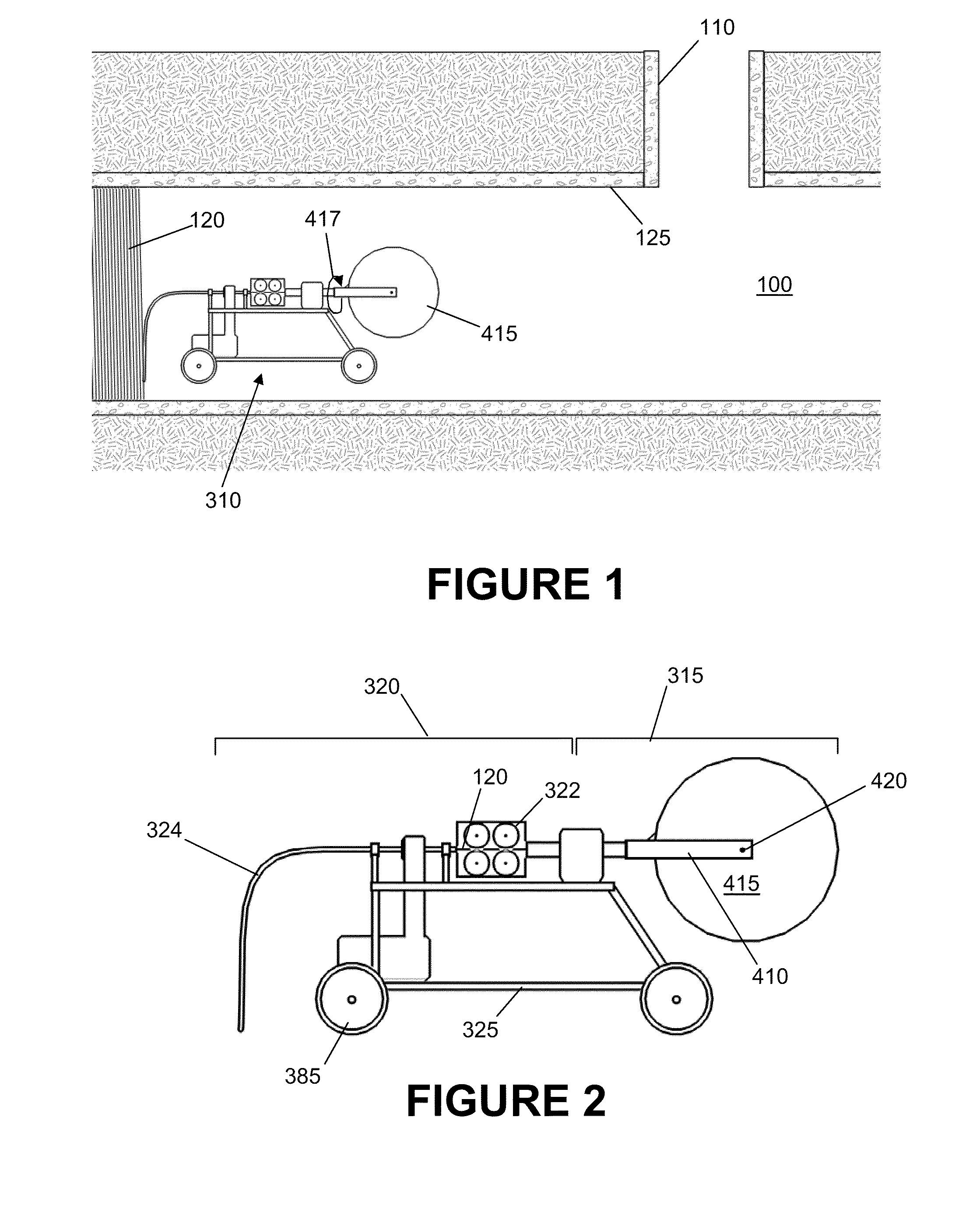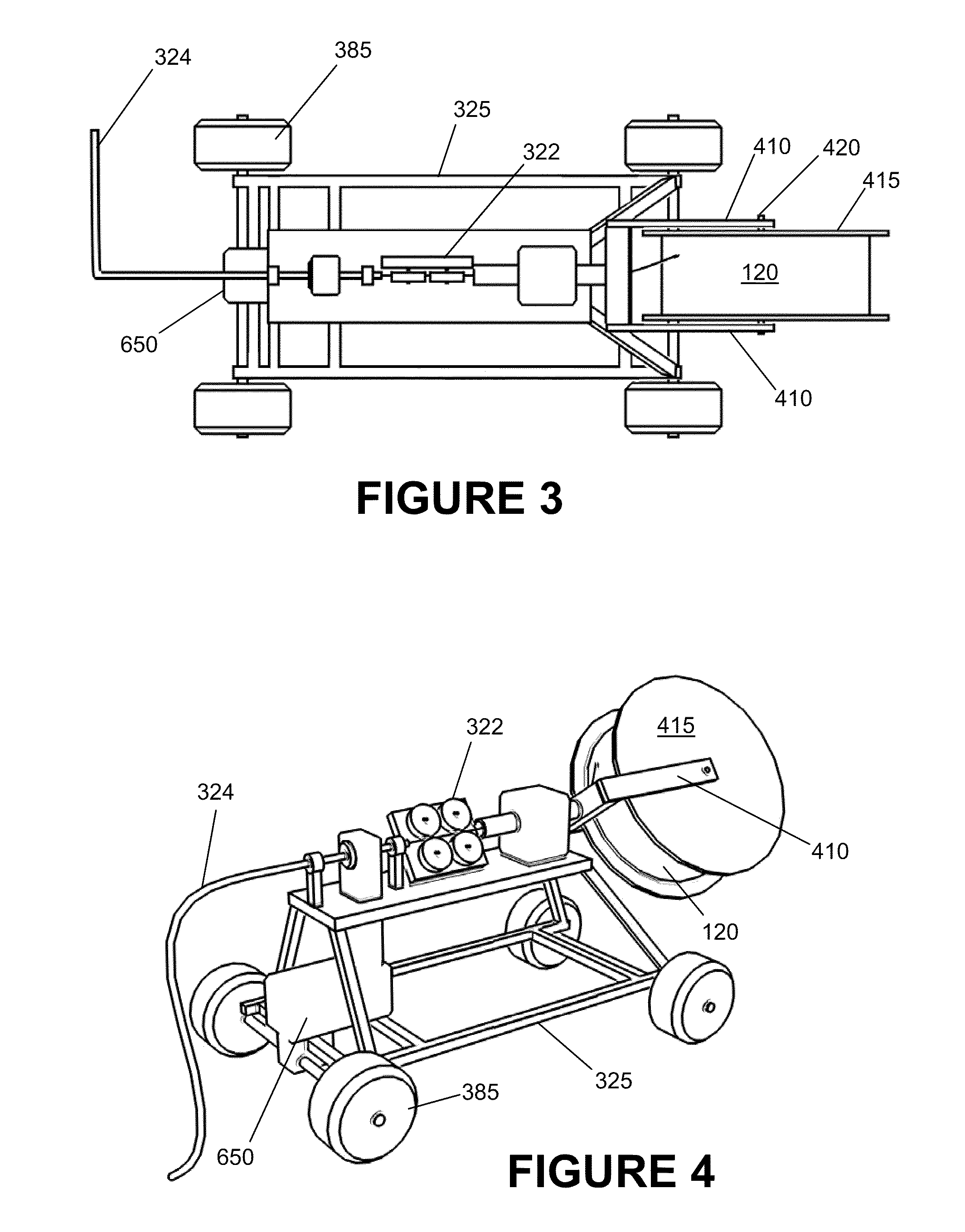Method for repairing and strengthening pipe with internal helically wound tensile reinforcement
a tensile reinforcement and pipe technology, applied in the direction of pipes, mechanical equipment, pipes, etc., can solve the problems of buried pipe infrastructure rapidly deteriorating throughout the world, other pressure pipes subject to large internal hydrostatic pressure, and pipes exposed to aggressive environments deteriorating over time, so as to prevent torsional stress accumulation, improve the bonding of the hardening matrix to the substrate of the pipe, and relieve the stress on the tensile reinforcement material
- Summary
- Abstract
- Description
- Claims
- Application Information
AI Technical Summary
Benefits of technology
Problems solved by technology
Method used
Image
Examples
Embodiment Construction
[0029]The invention summarized above may be better understood by referring to the following description, claims, and accompanying drawings. This description of an embodiment, set out below to enable one to practice an implementation of the invention, is not intended to limit the preferred embodiment, but to serve as a particular example thereof. Those skilled in the art should appreciate that they may readily use the conception and specific embodiments disclosed as a basis for modifying or designing other methods and systems for carrying out the same purposes of the present invention. Those skilled in the art should also realize that such equivalent assemblies do not depart from the spirit and scope of the invention in its broadest form.
[0030]A method for repairing a pipe is described in which a tensile reinforcement material, having sufficient stiffness to resist buckling over short distances, is compressed onto the inside surface of the pipe into a continuous helical coil of vario...
PUM
| Property | Measurement | Unit |
|---|---|---|
| length | aaaaa | aaaaa |
| tensile reinforcement | aaaaa | aaaaa |
| torsional stress | aaaaa | aaaaa |
Abstract
Description
Claims
Application Information
 Login to View More
Login to View More - R&D
- Intellectual Property
- Life Sciences
- Materials
- Tech Scout
- Unparalleled Data Quality
- Higher Quality Content
- 60% Fewer Hallucinations
Browse by: Latest US Patents, China's latest patents, Technical Efficacy Thesaurus, Application Domain, Technology Topic, Popular Technical Reports.
© 2025 PatSnap. All rights reserved.Legal|Privacy policy|Modern Slavery Act Transparency Statement|Sitemap|About US| Contact US: help@patsnap.com



